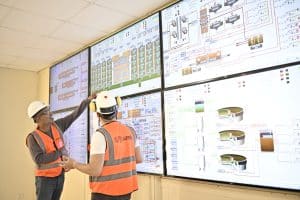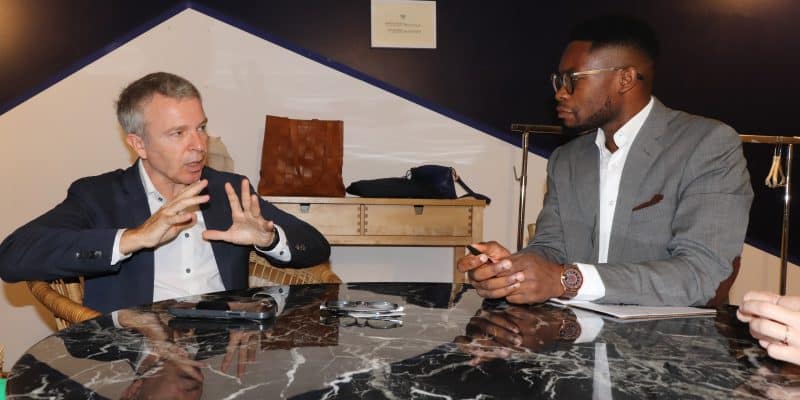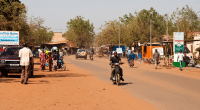SUEZ wants to make innovation the main lever for its development around the world, particularly in Africa where the Group is very active in water and sanitation management, as well as waste management. For Jérôme Bailly, SVP Innovation, innovation is the key to improving the efficiency of drinking water and wastewater infrastructure and waste treatment.
SUEZ wants to make innovation the main lever for its development around the world, particularly in Africa where the Group is very active in water and sanitation management, as well as waste management. For Jérôme Bailly, SVP Innovation, innovation is the key to improving the efficiency of drinking water and wastewater infrastructure and waste treatment.
Jean Marie Takouleu: SUEZ is increasing its research and development (R&D) budget by +€40 million until 2027. In concrete terms, how will this funding be deployed?
Jérôme Bailly: The investments will mainly be made in the areas of waste and decarbonization. Because in the water sector, we have a very strong R&D track record, with a lot of know-how, innovative proprietary solutions and patents.
So as far as water is concerned, we are going to maintain our efforts and refocus even more strongly on priority areas.
In particular, we are going to focus even more strongly on water resource issues, whether in terms of forecasting, reducing use, combating leaks, etc. We all know how this extra degree of climate change has completely destabilized the water cycle, with the resurgence of droughts. Unfortunately, this is not going to stop, so we are looking ahead. We’re not forgetting infrastructure, particularly networks. Contrary to popular belief, the network often costs more to build or maintain than a drinking water plant. We will be investing more in leak detection and inspection technologies for water networks, using robots and drones.
We must not forget the issue of water quality with PFASs (Per-and Polyfluoroalkylated Substances), which include several thousand chemical compounds found in various industrial and everyday consumer products: textiles, food packaging, fire-fighting foams, non-stick coatings, cosmetics, pesticides, etc.
We have other issues to deal with in the area of wastewater, particularly sludge treatment, but in my view, these are probably less of a priority for the African continent.
What about waste?
As far as waste is concerned, we are going to double our Innovation effort. And this has already begun. Over the last twelve months, for example, for the first time in the history of SUEZ, we have started as many projects in the waste sector as in the water sector. The key issues in the waste sector include sorting, i.e. sorting better and at all levels, among users, at the end of the bin and at sorting plants. The second major issue is recycling, particularly of plastics. On a different timescale, we are looking at the recovery of complex materials, either through material recovery or waste-to-fuel.
North Africa is facing water stress exacerbated by climate change. How can SUEZ’s innovations help the countries of the sub-region to reduce the impact of water stress?
As you already know, SUEZ is responsible for water management in several African countries. In Egypt, one of the solutions to water stress is the reuse of treated wastewater. We talk a lot about water stress, but we must not forget the problem of the quality of resources, and the best way is not to pollute these resources, so as not to have to clean them up at great expense later on. At the Gabal el Asfar plant maintained and operated by SUEZ, the quality of the treated wastewater released into the Nile, the country’s main source of fresh water, is impeccable, and some of the recycled water is reused for agricultural irrigation.

The Gabal El Asfar wastewater treatment plant in Egypt has a capacity of 1 million m3 per day © Franck DUNOUAU
At the same time, we are working to improve the efficiency of water networks. In Senegal, in terms of innovation, we are working on energy optimization, developing, for example, a project involving the construction of solar farms for the sustainable use of water infrastructures. We are also at the pilot stage for the introduction of remote meter reading.
In sub-Saharan Africa, the problem is quite different: there are sufficient water resources, but people still do not have access to a safe source of drinking water. Can SUEZ’s innovations meet this other challenge?
We talk a lot more about technological innovation. But there’s another subject that doesn’t get talked about enough, namely innovation in terms of business models, finance, and so on. This is very important. I don’t think there is a technological problem preventing universal access to drinking water in Africa.
As you say, there is water, and so there is a problem with the ability to pay the true price of the service for access to water, and therefore with the business model, or international financial support. In this context, SUEZ can help improve the efficiency of existing systems by setting up high-performance networks to reduce leakage and optimize energy consumption. We have expertise in this area.
Things that seem as simple as the choice of materials. I went to see what was happening in Senegal. Some connections are made of high-density polyethylene (HDPE) of mediocre quality. Senegal is a hot country, with high levels of chlorine in the water it supplies. And these HDPE pipes have poor resistance to the combination of temperature and chlorine. So, you have to choose the right material, pay a little bit more and save a lot of money, with fewer breaks and fewer leaks. Weakened networks cannot withstand pressure, which is why pressure regulators can be installed to extend their lifespan by a few years. So, it’s not just one, but several solutions that need to be put in place at each stage, i.e. network design, laying pipes, especially repairing leaks to prevent water being lost, billing, etc. These are all things that cost money.
These things are a bit expensive at the outset, but they need to be anticipated, and the benefits will last for 20 or even 50 years.
There is under-investment in drinking water infrastructure in sub-Saharan Africa. Are public-private partnerships (PPPs) feasible in this sector in the long term?
PPPs really need to be considered over long periods of time, between 20, 25 and 30 years, with institutional and political stability and an economic framework at stake.
Have you identified any obstacles to setting up PPPs?
When it comes to PPPs, consumers are more concerned about the cost of water.
Raw water is free. But it has to be treated, transported, pressurized, quality-controlled and, above all, available 24 hours a day. This service has a cost. The benefits to the population are enormous, particularly in terms of health.
Local authorities in Africa are making increasing use of PPPs, which can take a variety of forms. They benefit from technological innovations and private sector financing, but also from the transfer of know-how to local teams, so that the water and waste managers of the future can develop their skills.
SUEZ acquired EnviroServ, South Africa’s leading industrial waste treatment company, a few months ago. Are you going to use this new subsidiary to spread your innovations in the waste sector in Africa?
That’s exactly the spirit of SUEZ and our new operating model, based around two Divisions, Water and Recycling & Recovery, will encourage this approach. Our priority is to support what EnviroServ is doing by introducing them to SUEZ innovations. And then to disseminate them in South Africa and elsewhere on the continent. Over the next two years, we are going to ensure that EnviroServ is familiar with our main innovations, and that some of them are implemented.
We have a roll-out program at EnviroServ facilities, for example covering landfill sites to optimize biogas capture and avoid greenhouse gas emissions.
These are examples of what our R&D efforts can bring to African cities and states in their sustainable economic development, in two areas impacted by climate change and demographic growth.
Interview by Jean Marie Takouleu








You must be logged in to post a comment.